A mobile network is another name for a cellular network, and it belongs to a mobile communication hardware architecture. It is divided into two types: an analog cellular network and a digital cellular network. Because the signal coverage of each communication base station constituting the network coverage is hexagonal, the whole network is like a cell, so it is named as such.
1. What is Cellular Network?
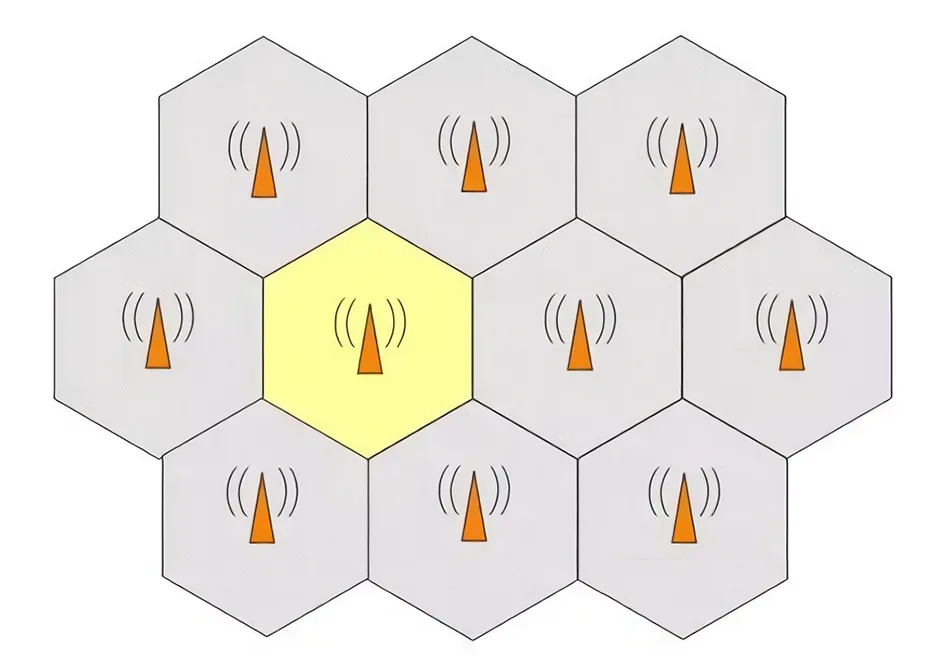
The cellular network includes three portions: mobile station, base station subsystem and network subsystem. Among them, the mobile station is the network terminal equipment, such as our mobile phones; digital devices, etc., it can be seen as a converter between wireless networks and wired networks.
The commonly used cellular mobile communication adopts the cellular wireless networking method, which connects the terminal and the network device through a wireless channel, thereby realizing the mutual communication between users. Its domain characteristic is the mobility of the terminal. Its functions are to switch across local networks and to roam automatically. With the development of various communication technologies, some reports predict that the number of cellular devices will reach more than 350 million in the future, especially the cellular devices accessed through LTE and 5G. Under such circumstances, more efficient cellular device testing is urgently needed.
2. How Does Cellular Technology Work
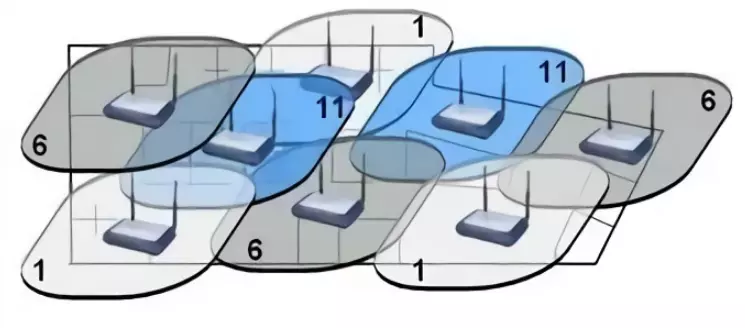
The cellular telephone system is used to establish a connection between a mobile station and a public telephone system, or another connection between a mobile station of another cellular system.
The information between the mobile station and the cellular network is transmitted by radio waves, which eliminates the need for telephone lines in conventional telephones, so that mobile users can move freely, such as, in a car, or on foot.
3. Why is it called a cellular Network?
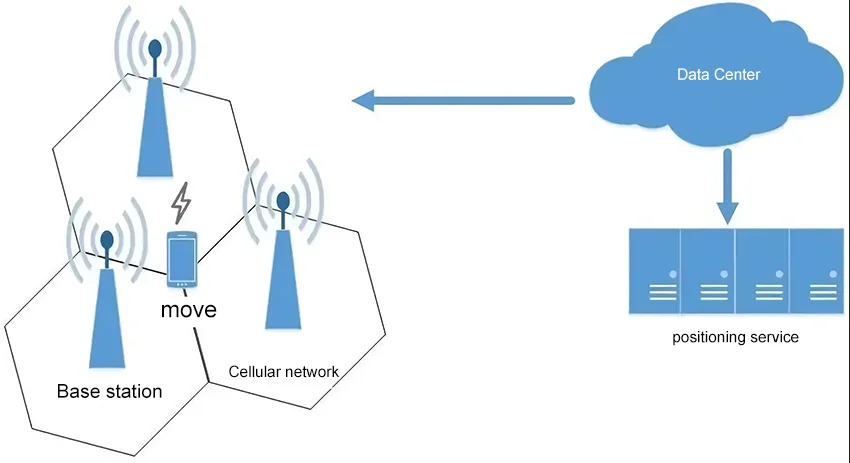
Cellular is wireless communication technology. This technology divides a geographic area into several cells, called “cellular” (ie Cell); hence, the technology gets its name, the cellular. Cell phones (or mobile phones) use this technology and are therefore often referred to as cellular phones. It can reach full advantage of the limited wireless transmission frequencies by dividing a huge geographical region into several cells. Each group of connections (or, in the case of wireless phones, each group of sessions) requires a dedicated frequency, while there are only about 1000 available frequencies in all. To enable more conversations to take place simultaneously, cellular systems assign a certain amount of frequency to each “cell” (ie, each small area). The same frequency can be achieved and active by different cells; therefore, the wireless resources that are limited could be fully applied and utilized. GSM (The Global System for Mobile Communications) and CDMA(Code Division Multiple Access) are cellular systems that are common and ordinary to see. They are 2nd-generation communication technologies.
4. What Wireless Technologies are Included in Cellular Network?
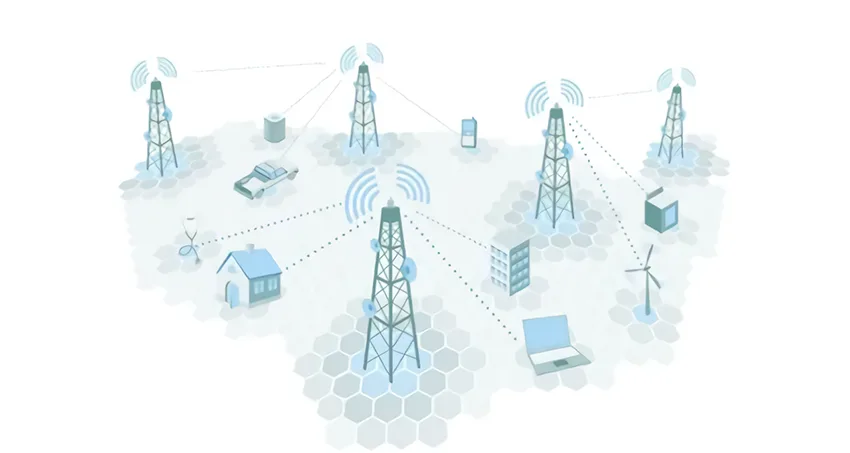
Spatial Modulation Technology
In wireless communication cellular technology, the spatial modulation method can be used to make the wireless network antenna layout more scientific and reasonable. Spatial modulation itself is a form of information technology that enhances network transmission performance by correlating network data with antenna locations.
Massive Antenna Technology
Large-scale antenna technology, in the wireless network cellular technology, forms a transmission channel that can transmit and receive through the solidified facility of the antenna. As a component type based on electronic technology, the antenna itself can realize the transmission function of wireless signals. The use of large-scale antenna technology in the communication network can lay the foundation for the overall formation of the cellular system.
Radio Network Technology
Radio is the foundation of the network. In the application of radio network technology, efficient transmission channels can be formed through the radio spectrum. In the radio network, the usage needs of network users can be identified, and then suitable network channels can be allocated autonomously for users. When a certain frequency band is occupied, the user’s network usage needs will be rejected, and other frequency bands will take over.
4.1 What is 1G technology?
1G basically is the 1st generation of technology for mobile communication (1G). In addition to that, it usually refers to the original analog, standards for voice-only cellular telephones. It was developed in the 1980s. Nordic Mobile Telephony (NMT) is one such standard. It was applied in Eastern Europe, Russia, and Nordic countries. Others contain Advanced Mobile Phone System (AMPS) which is located in the US, Total Access Communication System (TACS) which is situated in the UK, JTAGS which is operated in Japan, C-Netz which is worked in West Germany, Radio com 2000 in France, and RTMI that was first serviced in Italy. In many places, analog cellular services are slowly being eliminated.
4.2 What is 2G technology?
2G stands for the 2nd generation of technology in the area of mobile communication. GSM is an example of it. The core of the technology is the transmission of digital voice. GSM is a standard introduced in 1992 by the European committee for standardization. It adopts digital communication technology and unified standards of network for all. By doing, communication quality and development of new services for users would be ensured. The GSM mobile communication network has a transmission speed of 9.6 k/s. Currently, there are more than 500 million GSM mobile subscribers in the world, covering 1/12 of the population, and GSM technology occupies more than 70% of the global digital mobile phone field. GSM is the technology relative to analog mobile communication technology.
4.3 What is 3G technology?
3G stands for the 3rd generation of technology. It was compared with the previous generations (1G and 2G) of GSM, CDMA, and other types of digital mobile phones.
Generally speaking, 3G refers to a new generation of mobile communication systems which integrate wireless communication with multi-media communication, and the Internet is a representative example. It can process all types of media forms and provide various types of information services. The form can be music, video streams, or pictures, and the services can be teleconference, web browsing, and e-commerce. To offer this type of service, the wireless network must be able to support different data transmission speeds, namely, 2 Mbps and 384 kbps in respective environments, such as inside of a room, outside of the building, and in mobile environments. In addition, the transfer speed is 144 kbps.
4.4 What is 4G technology?
4G technology is short of the 4th generation of mobile communication in the technology area. It is a technological product that combines 3G and WLAN. It can transmit high-quality video images, and the quality of image transmission is equivalent to that of HDTV.
The fundamental purpose of 4G mobile communication technology is to send and receive signals from the other end of the terminal product, and to find the fastest and most efficient communication path between different network systems, platforms, and wireless communication interfaces in the fastest transmission, receiving and positioning action.
4.5 What is 5G technology?
5G is a brief of the 5th-generation of technology of mobile communication. It is the newest generation. It is also an extension of previous generations of the systems, such as 4G. South Korea’s Samsung Electronics Co., Ltd. first successfully developed the fifth-generation mobile communication technology in 2013 and began to commercialize it last year.
4.6 What is 6G technology?
6G is an expansion of 5G, which is the 6th generation mobile communication standard. Also called the 6th generation of technology of mobile communication. The main promotion is the growth of the IoT. 6G base stations can simultaneously access more than hundreds of wireless connections. The capacity of these stations reaches 1,000 times that of 5G base stations.
5. Security of cellular network technology

Wireless cellular networks play an important role in upgrading the coverage of wireless networks. In the broadband wireless metropolitan region network, a mesh structure can achieve coverage of a large area that is low-cost and high-efficiency. The mesh structure is great in many aspects like offering effective circuitous routing when the network can not ensure smooth communication. It is more flexible and reliable than private lines or daisy chains, and the network has the capabilities of self-configuration, self-organization, and self-healing.
Wireless networks have been adopting a centralized control mode for a long time, which also brings potential risks like transmission bottlenecks, legacy systems, or failure of a single point. Nevertheless, wireless networks are becoming another wireless switching technology. Cellular networks can distribute intelligence from switches to access points through an organized mesh topology.
Due to the fact that cellular networks rely on management, control, and discovery of information, they must protect their own traffic and users’ traffic. In-band information is transmitted via an encrypted tunnel, which can prevent eavesdropping or similar attacks. Standards-based security technologies, such as 802.1x, and encryption technologies such as Advanced Encryption Standard, ensure that only authorized wireless network devices and nodes can connect and be properly encrypted.
6. What is the Market for Cellular Network Technology?
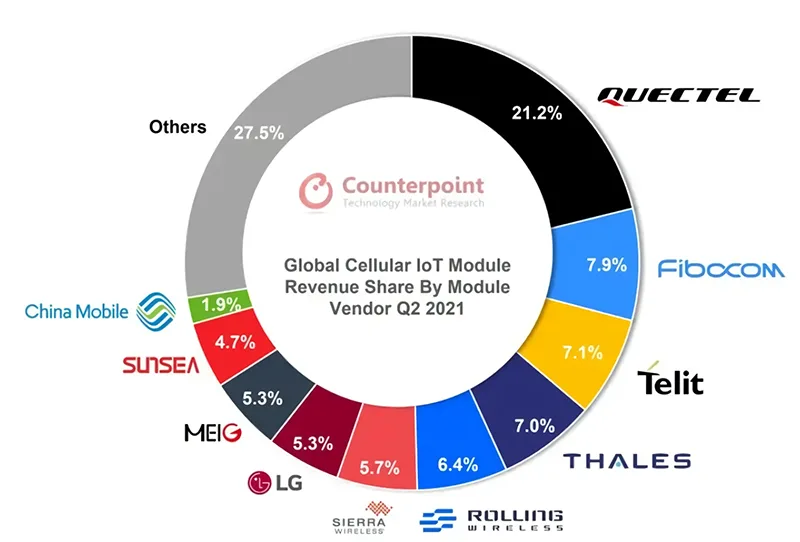
Counterpoint Research, a world-renowned research institution, has released the newest forecast of global cellular IoT modules: by the 2030s, global shipments of cellular IoT modules will exceed 1.2 billion, with a compound yearly growth rate of twelfth percent. The develin shipments will be primarily driven by the 5th generation, NB-IoT, and 4th generation Cat 1 bis technologies. Between 2022 and 2030, 5G technology will be the fastest growing technology, followed by 4G Cat 1 bis technology.
At the same time, according to a report released by research firm Juniper, the market size of cellular IoT will reach 31 billion US dollars in 2022, and by 2026, the market size of cellular IoT will exceed 61 billion US dollars!
7. History of cellular technology
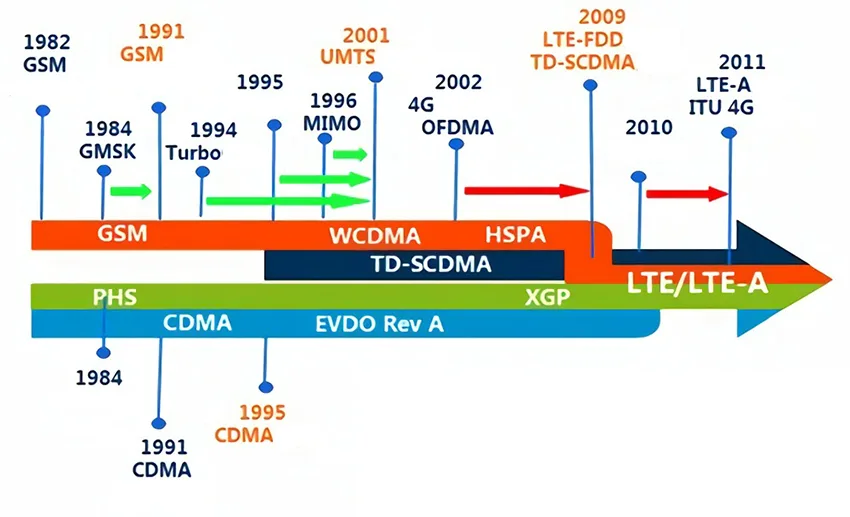
Since the development of cellular mobile communications, a landmark technological innovation has been completed about every ten years, and it has experienced a leap-forward development from voice services to high-speed broadband data services. In the early 1980s, the 1st generation mobile communication system, the cellular mobile phone system, was born. The 1G mobile communication system introduced the concept of a cellular network (ie cell system) for the first time, realized space division multiplexing of spectrum resources, and adopted Frequency Division Multiple Access (FDMA) technology to improve system capacity.
In 1991, the 2nd generation mobile communication system or digital mobile communication technology came into being. The 2G mobile communication system adopts TDMA and CDMA technology (time division multiple access \ code division multiple access). The system adopts digital modulation technology. Its system capacity, confidentiality, and voice call quality were greatly improved, resulting in great commercial success.
With the development of the network, data and multimedia services are developing rapidly. In 2001, the 3rd generation mobile communication system for the purpose of digital multimedia mobile communication entered the commercial stage. The 3G mobile communication system adopts the more advanced wideband CDMA technology and uses a larger system bandwidth for data transmission in higher frequency bands, so its data transmission rate is further improved. Its main representatives are CDMA 2000 in North America, the Wideband Code Division Multiple Access (WCDMA) mobile communication system proposed in Europe and Japan, and the Time Division-Synchronization Code Division Multiple Access (TD-SCDMA)) technologies in China.
In 2011, 3GPP released the 4th Generation mobile communication system which is broadband data mobile Internet communication technology. The 4G mobile communication system is designed based on flat network architecture and upgraded on the basis of 3G’s Long Term Evolution (LTE). The LTE system adopts Key technologies, such as OFDMA, AMC, and MIMO, are adopted by the LTE system (The abbreviations stand for orthogonal frequency-division multiple access, adaptive modulation and coding, and multiple-input multiple-output). The spectral efficiency is improved, and the peak uplink/downlink rate reaches 50Mbps/100Mbps.
Unlike previous generations of technologies that only provide broadband mobile communication between people, 5G, as a mobile communication system for the needs of the human information society after 2020, will penetrate into the Internet of Things and other fields, and will be closely related to industrial facilities, medical equipment, transportation. It brings in-depth, fully implements the Internet of everything into equal participation. It meets the information service needs of vertical industries in effective ways. Transportation, industry, and health care are examples of meeting the demand. In addition to supporting traditional human-to-human communication, it will also support large-scale machine-type communication, becoming an important driving force for promoting national economic and social development and promoting industrial transformation and upgrading. Worldwide, a number of organizations and institutions have emerged to carry out active research work on 5G.















